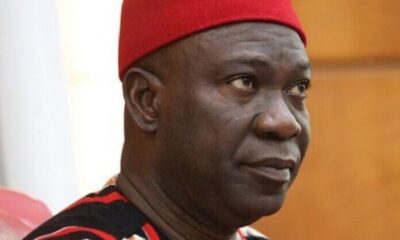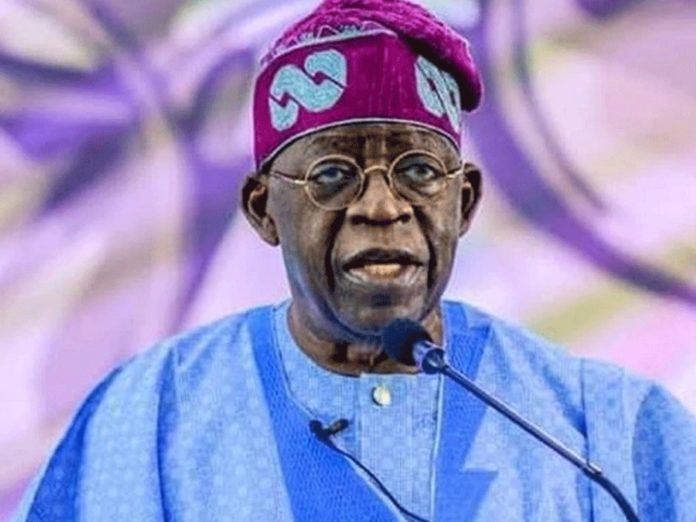Africa
African Governments and the Shackles of Debt Repayment -By Kator Ifyalem
Debt repayment significantly constrain African governments, limiting their ability to invest in essential services, climate adaptation, and energy infrastructure. While some progress in debt restructuring and service reduction is evident, the scale of the problem demands comprehensive global financial reforms and a strategic pivot toward sustainable, internally driven economic growth. Only by moving beyond loans and establishing fair, transparent debt frameworks can Africa hope to unlock its vast potential and secure a prosperous future for the people.

African countries face an external debt service burden estimated at nearly $89 billion, a figure that starkly overshadows expenditures on critical sectors like healthcare and education. This debt servicing amount is several times higher than many national budgets allocated for these essential services, constraining the ability of the governments to invest in human capital and social infrastructure. For instance, in 2023, Sub-Saharan African nations spent more on debt interest payments than on education, highlighting the severe fiscal squeeze imposed by debt obligations.
The continent’s total external debt has surged to approximately $685.5 billion by the end of 2023, representing about 24.5% of Africa’s combined GDP. This escalation is driven by multiple factors, including the fallout from the COVID-19 pandemic, the economic repercussions of the Russia-Ukraine conflict, and rising inflation, which have forced many African governments to increase borrowing to sustain their economies. Notably, about 20 low-income African countries are currently either in or at high risk of debt distress, underscoring the precariousness of the debt situation.
Much of these loans have been directed towards emergency relief efforts, infrastructure development, and social programs aimed at cushioning the economic shocks from global crises such as the COVID-19 pandemic and fluctuating commodity prices. For example, Nigeria’s $3.4 billion IMF loan obtained during the pandemic was used to support public health spending and stabilize the economy. However, the prudent utilization of borrowed funds varies widely across the continent. While some countries have effectively channeled loans into productive investments with long-term benefits, others have struggled with inefficiencies, corruption, and projects that fail to generate sufficient economic returns, thereby exacerbating debt sustainability challenges.
Nigeria exemplifies the challenges posed by this debt burden. The country has been grappling with rising debt servicing costs that consume a significant portion of government revenues, limiting fiscal space for development projects. The country’s efforts toward debt repayment included negotiations for restructuring and seeking more favourable borrowing terms, but the high cost of borrowing (Africa’s average bond yields stand at 9.8%, much higher than other developing regions) continues to strain its finances. Notably, recently, full repayment for the $3.4 billion IMF COVID-19 emergency loan was completed ahead of schedule in April 2025, a move that has bolstered its fiscal credibility and creditworthiness. The government is focusing on balancing debt obligations with the urgent need to fund infrastructure, healthcare, and education, but the heavy debt service payments often crowd out these priorities.
The implications of this debt crisis extend beyond fiscal constraints. Africa is particularly vulnerable to climate change, with increasing incidences of floods, droughts, and other extreme weather events that threaten agriculture, livelihoods, and infrastructure. The annual debt service payments, which are projected to average 137.4% of the continent’s climate finance needs between 2024 and 2030, severely limit the capacity to invest in adaptation and mitigation strategies. For example, recurrent floods across West and Central Africa have caused devastating human and economic losses, yet the funds available for climate resilience are dwarfed by debt repayments.
Energy and power supply improvements, critical for economic growth and poverty reduction, are also hampered by the debt burden. Many African countries struggle to finance large scale energy projects due to limited fiscal space and high borrowing costs. This situation perpetuates energy deficits and reliance on expensive energy sources. Without significant debt relief or restructuring, investments in renewable energy and power infrastructure will remain insufficient to meet the growing demand and climate commitments.
The challenges are daunting, but today there are some signs of cautious optimism. Reports indicate a projected 13% decline in external debt service payments to $88.7 billion, down from $102.6 billion in 2024, largely due to improved credit ratings, lower interest rates, and ongoing debt restructuring efforts. Countries like Ghana, Ethiopia, and Zambia are actively pursuing debt restructuring to regain fiscal stability and create room for development spending. The African Union has declared 2025 the Year of Reparations, emphasizing the need for fair debt resolution and systemic reform of the global financial architecture that currently puts African nations on a disadvantage.
However, debt cancellation alone is insufficient. The current international debt system, dominated by institutions like the IMF established during colonial times, is seen as inadequate and unfair. There is a growing call for transferring debt governance to a more representative and inclusive United Nations framework that can enforce responsible lending and borrowing practices and provide transparent, equitable debt resolution mechanisms. Such reform is crucial for Africa to break free from the cycle of debt dependency and to channel resources into sustainable development rather than servicing old debts.
The future growth of Africa must transcend reliance on loans. The continent needs to develop robust domestic revenue systems, expand local capital markets, and attract investment in productive sectors that generate real economic value. This shift is essential to reduce vulnerability to external shocks and to finance critical infrastructure, healthcare, education, and climate resilience autonomously. Without such transformation, African countries risk perpetuating a debt trap that undermines sovereignty and long-term development.
Debt repayment significantly constrain African governments, limiting their ability to invest in essential services, climate adaptation, and energy infrastructure. While some progress in debt restructuring and service reduction is evident, the scale of the problem demands comprehensive global financial reforms and a strategic pivot toward sustainable, internally driven economic growth. Only by moving beyond loans and establishing fair, transparent debt frameworks can Africa hope to unlock its vast potential and secure a prosperous future for the people.
























